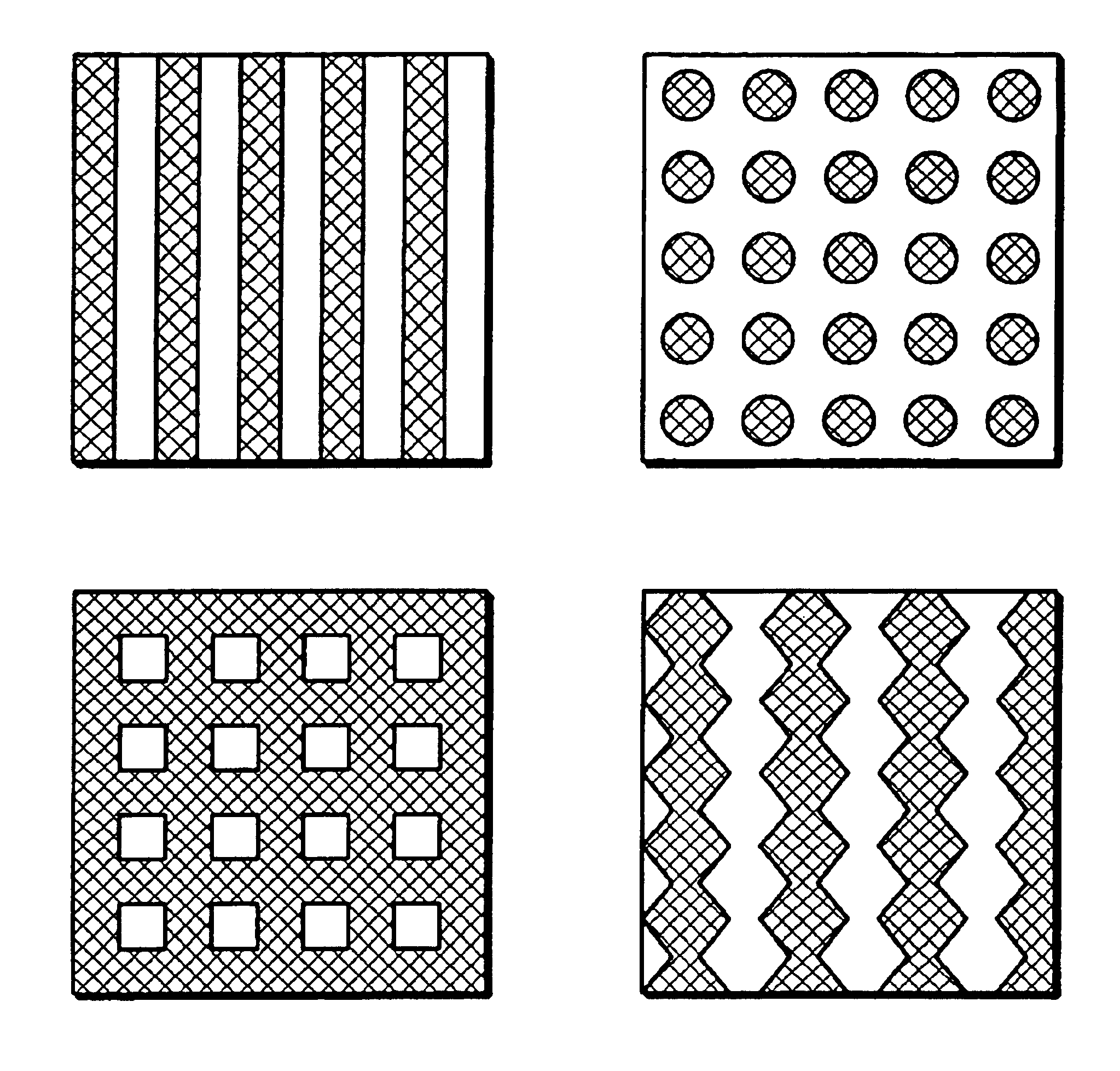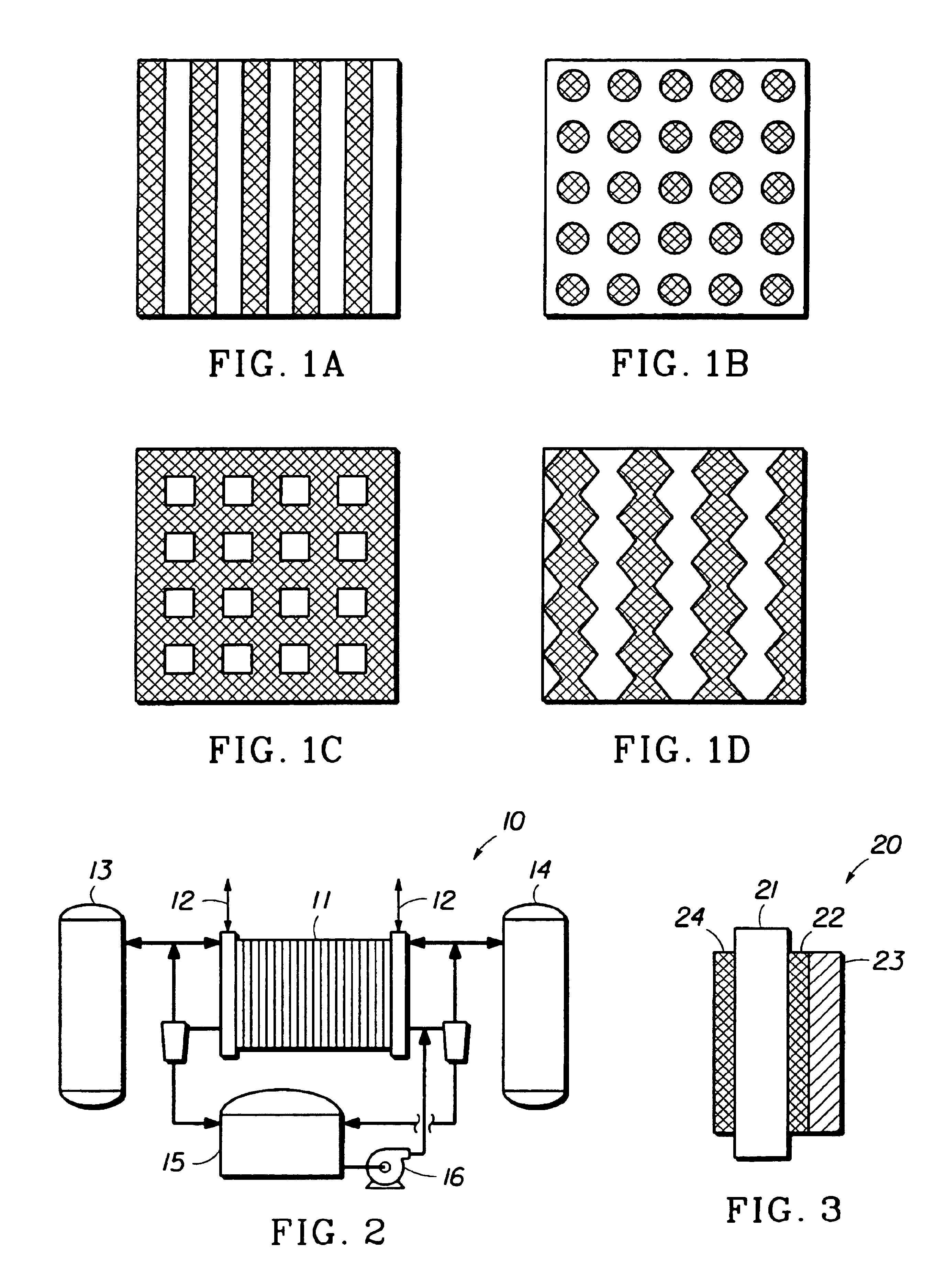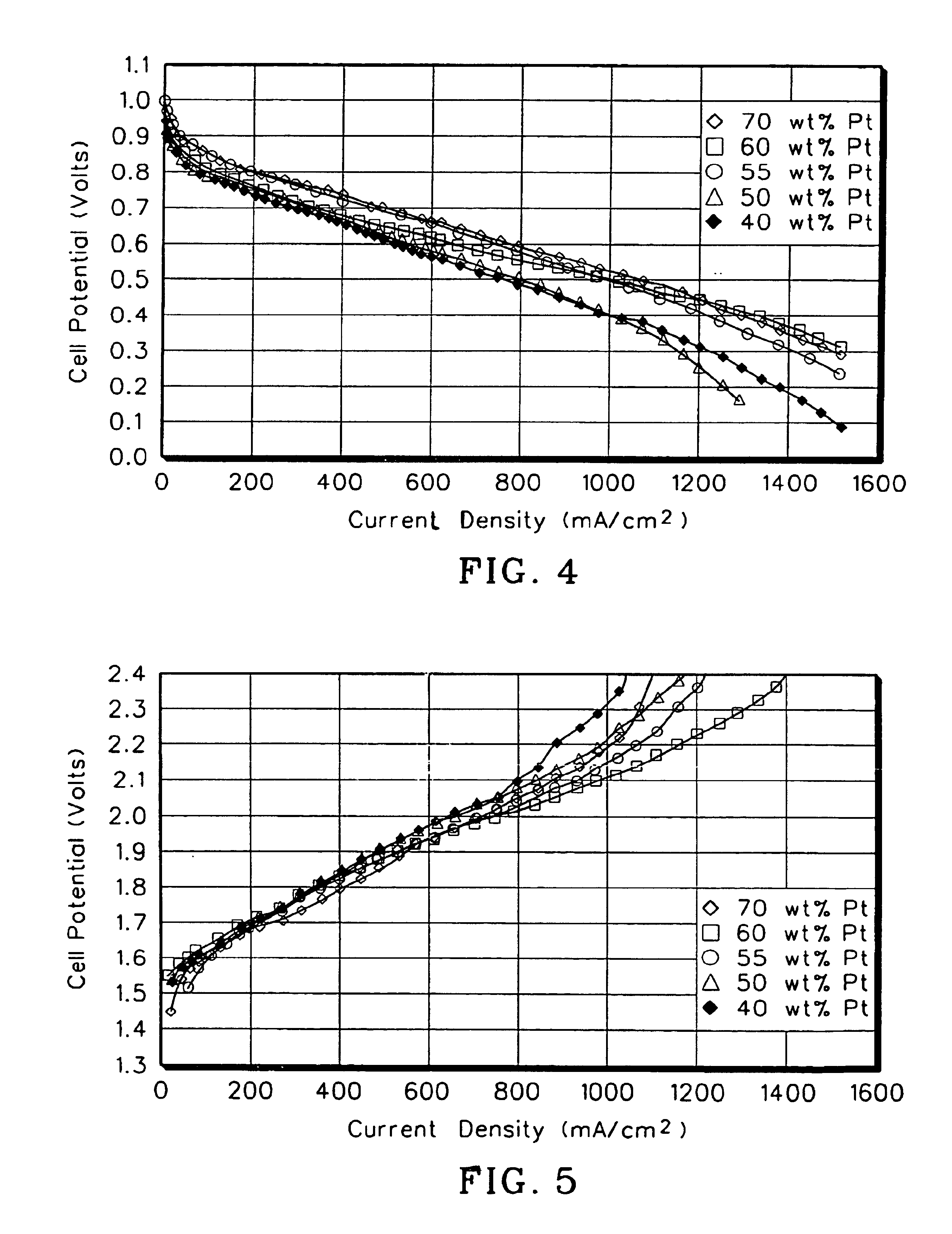Bifunctional catalytic electrode
a catalytic electrode, bifunctional technology, applied in the direction of electrolysis components, electrochemical generators, cell components, etc., can solve the problems of large amounts of more expensive iridium and little, if any, performance gain
- Summary
- Abstract
- Description
- Claims
- Application Information
AI Technical Summary
Benefits of technology
Problems solved by technology
Method used
Image
Examples
example 1
[0059]To determine the optimal electrocatalyst mixture for an oxygen electrode, several electrodes were prepared and tested using different mixtures of platinum black and equimolar ruthenium-iridium oxides. The amount of platinum black used in the tests ranged from between 70 wt % platinum black and 40 wt % platinum black, the remainder consisting of the equimolar ruthenium-iridium oxide solid solution. The test results are shown in FIGS. 4 and 5.
[0060]The ruthenium-iridium oxide solid solution was prepared using the classic nitrate fusion synthesis by Adams. The oxides product of the fusion synthesis was thoroughly washed with water to remove chloride ions, known to be detrimental to the performance of platinum catalysts.
[0061]A mass of ruthenium-iridium oxides was combined with a quantity of fuel cell grade platinum black to produce a mixture having the desired weight percent platinum. Five tests were run, each with a different oxygen electrode differing only by the amount of plat...
example 2
[0064]Using the same procedure as example 1, two oxygen electrodes were assembled and tested for their performance in an electrolyzer mode. As in the first example, only the amount of platinum black in the electrocatalyst mixture was varied. The first oxygen electrode had an electrocatalyst blend of 65 wt % platinum black, the remainder being the equimolar iridium-ruthenium oxides. The second oxygen electrode had an electrocatalyst of pure equimolar ruthenium-iridium oxides and no platinum black. The results, as shown in FIG. 6, demonstrated that the electrolyzer performance of the electrode having the mixed electrocatalyst of platinum black and equimolar ruthenium-iridium oxides performed as well as the electrode having a pure equimolar ruthenium-iridium oxides electrocatalyst.
example 3
[0065]To determine the optimal mix of NAFION binder and the electrocatalysts, seven oxygen electrodes were made with varying quantities of NAFION varying from between 30 vol % and 60 vol % NAFION. Using the same procedure to assemble the electrodes as in Example 1, the quantity of NAFION used for the binder was 30, 35, 40, 45, 50, 54, and 60 vol % NAFION, the remainder being an electrocatalyst blend of 60 wt % platinum black and 40 wt % ruthenium-iridium oxides. Each oxygen electrode was placed in a test cell and operated as both a fuel cell and as an electrolyzer cell. The results shown in FIGS. 7 and 8 demonstrated that the mixture having 40 vol % binder was optimal.
PUM
| Property | Measurement | Unit |
|---|---|---|
| vol % | aaaaa | aaaaa |
| hydrophobic | aaaaa | aaaaa |
| hydrophilic | aaaaa | aaaaa |
Abstract
Description
Claims
Application Information
 Login to View More
Login to View More - R&D
- Intellectual Property
- Life Sciences
- Materials
- Tech Scout
- Unparalleled Data Quality
- Higher Quality Content
- 60% Fewer Hallucinations
Browse by: Latest US Patents, China's latest patents, Technical Efficacy Thesaurus, Application Domain, Technology Topic, Popular Technical Reports.
© 2025 PatSnap. All rights reserved.Legal|Privacy policy|Modern Slavery Act Transparency Statement|Sitemap|About US| Contact US: help@patsnap.com



